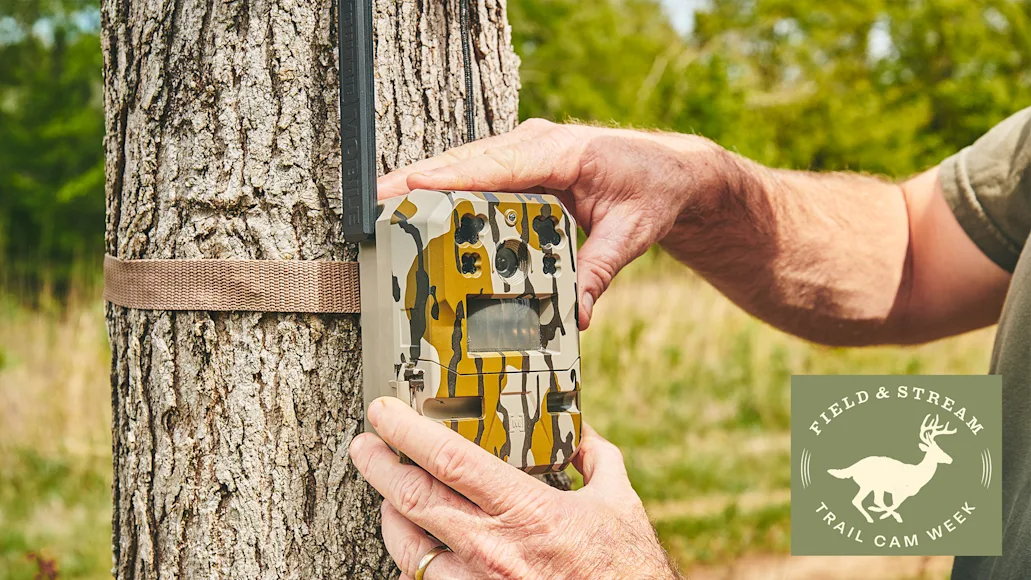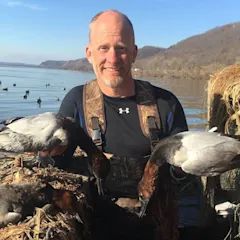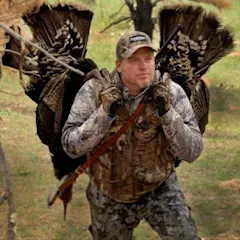Have you ever set a trail camera in what looked to be a great spot, but only captured photos of squirrels, skunks, and one or two does? Pictures of the sky, deer legs, or blades of grass are aggravating, too—but maybe not as much as no pictures at all because you forgot to turn the camera on. Trail cameras are incredible scouting tools that can dramatically increase your odds of killing a big buck. But using them successfully rests largely on your shoulders.
You have to place the camera in the right spot—and the right way—to get quality photographs of good bucks. And that prospect can make beginners uneasy, as they wonder where to put trail cameras and what settings to use.
Don’t fret. Figuring out where to put trail cameras to capture good images of deer really isn’t that complicated. In fact, experts say that following common-sense guidelines can help you set your cameras at photo hotspots quickly. And it only takes a little more know-how to learn where to put trail cameras for big bucks specifically.

Table of Contents
Basics: Where to Put Trail Cameras
Field Edges
Minerals
Top 5 Big Buck Trail Camera Spots
Bait Stations
Summer Mineral Licks
Entry Trails to Summer Feeding Areas
Mock Scrapes
Rut Funnels
Troubleshooting
Where Not to Put Cameras
Changing Deer Patterns
Keep Tweaking
Basics: Where to Put Trail Cameras

Obviously, it’s best to put trail cameras in spots that naturally attract deer and other critters, including feeding areas, travel corridors, deer trails, and other locations where animals congregate. Fields, food plots, and similar open areas are natural places for cameras because they attract wildlife and offer open views of relatively large spaces. Picking the right spots to mount a camera near a field, however, can be tricky, so here are some expert tips.
Focus on Field Edges
Ted Marum, who guided whitetail hunters in several states for 20-plus years and still runs 70 to 80 trail cameras on his leases, also specific field scenarios.
“In summer, I like to put them where there’s a couple of different crops that come together, like corn and soybeans or corn and alfalfa, on a corner,” he said. “Bucks love to walk the edges of those corners.”
Marum also focuses on field-edge licking branches, which are low-hanging tree branches bucks use to deposit their scent. “Deer hit them all year, so I’ll set them on those,” he said. “If you just walk the field edges, you can tell the ones they’re hitting—the ones they’re mouthing and chewing on.”
Setup Tip: Sometimes it’s difficult to find an ideal tree for hanging your camera on a field edge. Consider setting your cameras on a trail camera mounting post, which allows you to point the lens exactly where you want it, while at the same time angling it slightly north or south to minimize morning or evening glare from the sun. Also, while cellular cameras are always nice, field-edge cameras can usually be checked with minimal intrusion. As such, they’re great places to set standard trail cameras with SD cards.
Bust Out a Mineral Block
Marum also uses mineral products to attract bucks to trail camera setups. Whitetails crave minerals in spring and summer, so using these sites lets you pull deer to specific spots instead of trying to decipher their movement patterns. Further, creating those sites lets you position cameras ideally, such as facing them north or south to avoid the rising and setting sun. (Make sure mineral products are legal in your state before using them.)
“I’ll throw a mineral block out in the middle of nowhere in a draw and then throw a camera on it, and it’s amazing what shows up and what lives in those remote little-bitty draws,” he said.
Setup Tip: While bait sites are freshened frequently (see below), mineral sites are usually more of a “leave it and forget it” proposition. As such, cellular trail cameras are ideal for monitoring them. But be prepared to get a bunch of images, though, which can eat up data plans and batteries alike. Consider setting your cell cam on a once-per-day upload frequency if it’s set over a mineral lick, dialing multi-shot modes back to their lowest settings, and setting the capture delay to at least 30 seconds or longer.
Where to Put Trail Cameras for Big Bucks: Top 5 Spots

Every hunter, beginner or expert, wants to see trail-cam pics of big bucks, and because trophy whitetails tend to be elusive, it's tempting to think that you have to put our cameras in special, secret places to capture images of these bruisers. But while there is a little truth to that, for the most part, you don't, as long as you've got big deer around. Here are five great places (and times) to get pics of whopper bucks.
1. Bait and Mineral Sites: It's not legal everywhere, of course (so check regs), but the simple fact is that nothing puts deer of all sizes in front of your trail camera like a pile of corn or other bait. Big deer may get shy about coming to bait during the season, but in late summer, when they are un-pressured and focused on food, even the biggest bucks will pose for your camera at a bait pile. The same largely goes for mineral sights in late summer, when buck are growing their antlers. Setup Tip: Unlike mineral licks that are checked infrequently, bait stations require constant human intrusion to remain active. As such, they’re great places to use traditional trail cameras, which are easier on batteries than cellular cameras, and usually take better images. Simply swap SD cards anytime you sneak in to put out more corn.
2. Entry Trails to Summer Feeding Areas: The biggest bucks, often in bachelor groups, are not shy about hitting late-summer and early-fall ag crops and food plots. Place your cam on the field edge, looking toward the food near a good entry trail. Setup Tip: Anytime you’re trying to capture natural movement, set your camera on the highest sensitivity setting. Multi-shot bursts with short or no delays in between triggers give you the best chance to capture images of bucks on the move. Such settings will drain a camera in a hurry if it’s set over bait or mineral, though, so be sure to adjust accordingly if you move the device.
3. Mock Scrapes: If you can't or don't want to use bait or minerals, mock scrapes are next best option for putting good buck in front of your cameras. Mock or real scrapes at or along field or plot edges work year round and especially in late summer and early fall, but as the season progresses, scrapes in staging areas off the main feeding area or further into the woods can be better for capturing big bucks. Setup Tip: There is no better place to put a cellular trail camera than over a mock scrape (or active real scrape) up in the timber from mid-October through December. This is one of the best places (better than bait or mineral) to get a daylight photo of a big whitetail during hunting season, and when it happens, you need to drop everything and go hunt him.
4. Rut Funnels and Pinch Points: When big bucks start covering lots of ground during the rut, place cameras on in natural funnels and pinch points like saddles, bench trails, inside corners, the heads of washes, creek bottoms, and the like. Setup Tip: Choose a camera with a fast trigger speed and avoid setting it up perpendicular to the trail. Instead, angle quartering or even nearly parallel to a buck's line of travel.
Troubleshooting: Where Not to Put Trail Cameras
Trail-camera neophytes often struggle with a common mistake: Mounting cameras at seemingly good locations that don’t pan out. Marum focuses on typical animal behavior at various spots to weed out unproductive areas. For example, he avoids placing cameras at creek and fence crossings, as deer are usually moving while traveling through those places, making it difficult for cameras to capture good images. He also eschews another popular camera setup.
“I very seldom put them on water holes in the summer because bucks hardly use them,” he said. “Does use them unbelievably. But they’re lactating and running a lot of moisture through their bodies. With bucks, there’s a lot of heavy dew in the mornings, and I think they get most of their moisture through their foods.”
Where to Put Trail Cameras to Account for Changing Deer Patterns
Marum said the seasonal behavioral shifts of animals can also guide trail-cam tweaks. As deer change patterns from summer into autumn, he keys more on areas deeper in timber, and active scrapes and licking branches (bucks work licking branches all year, but most scraping activity in the North occurs in October and November). What's more, he doesn’t run his cameras year-round.
“I usually I put them out about July 10,” he said. “Then I run them all summer, through the fall, and then usually into mid- to late January. I don’t run them early, other than a little bit for turkeys to figure out where they are. I use them in summer, fall and then winter, and basically winter is just to see which deer made it through.”




